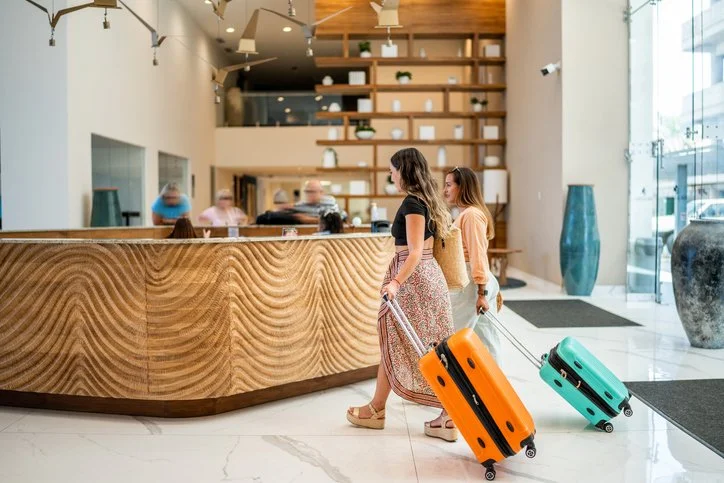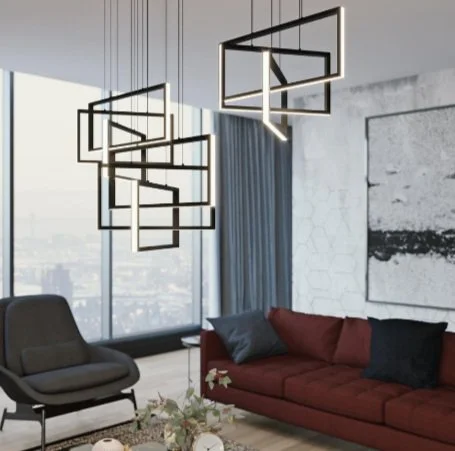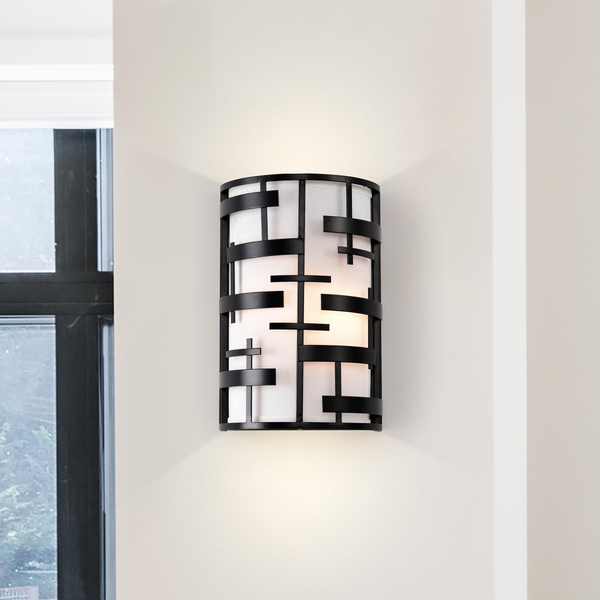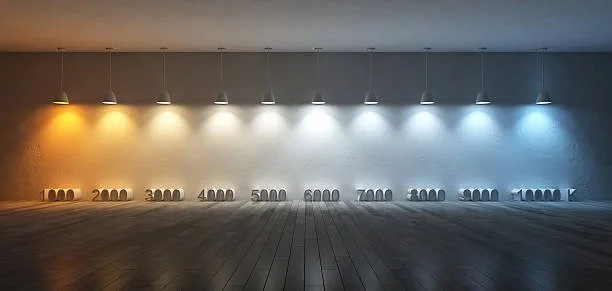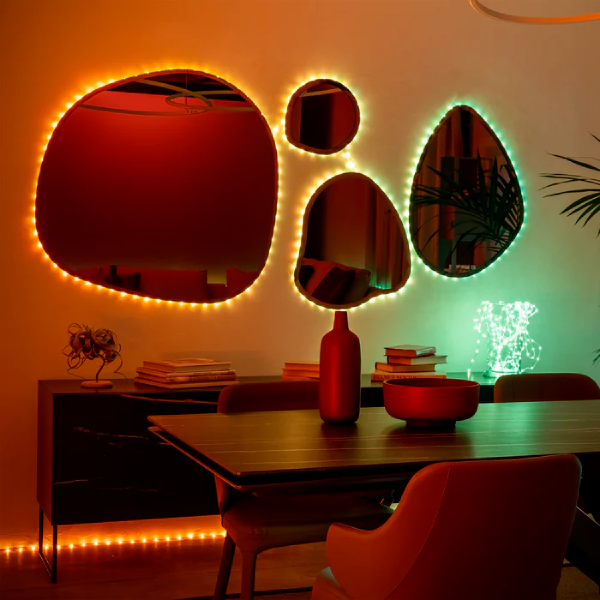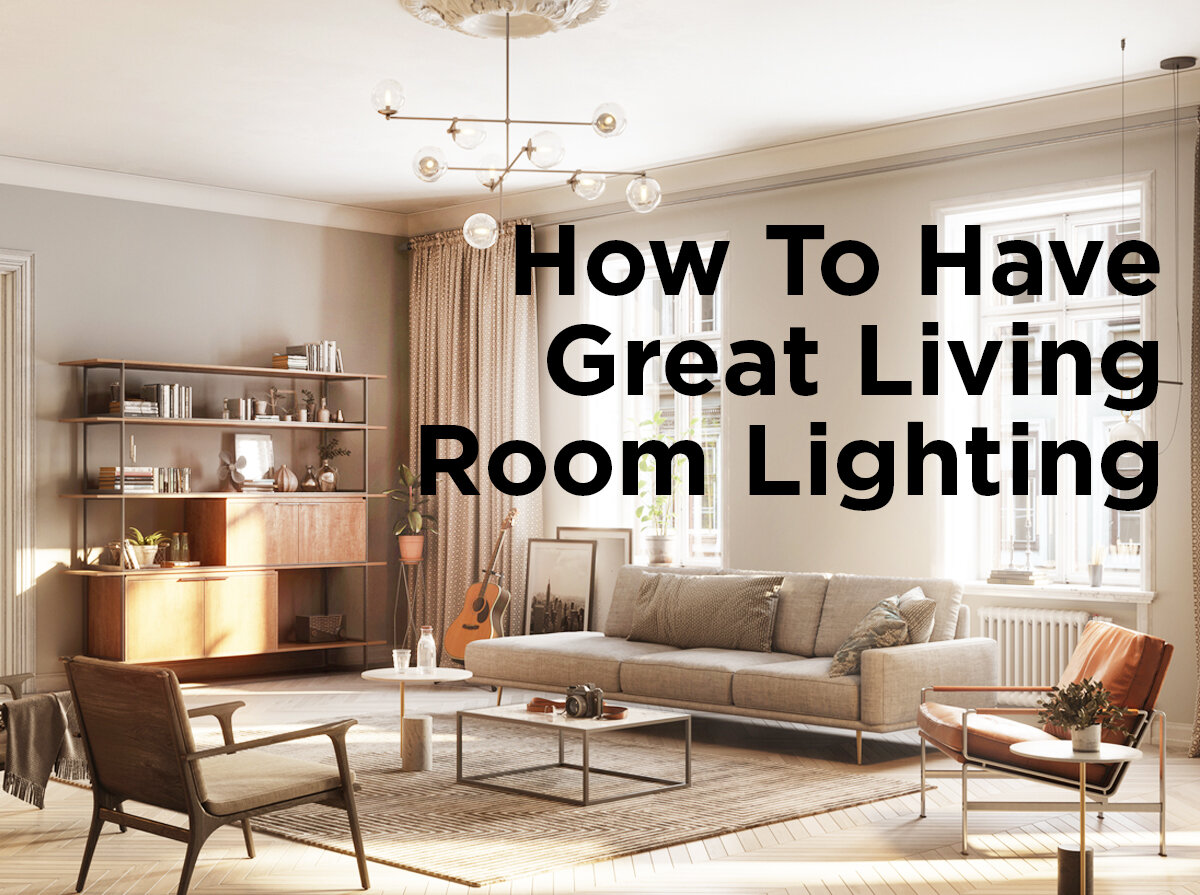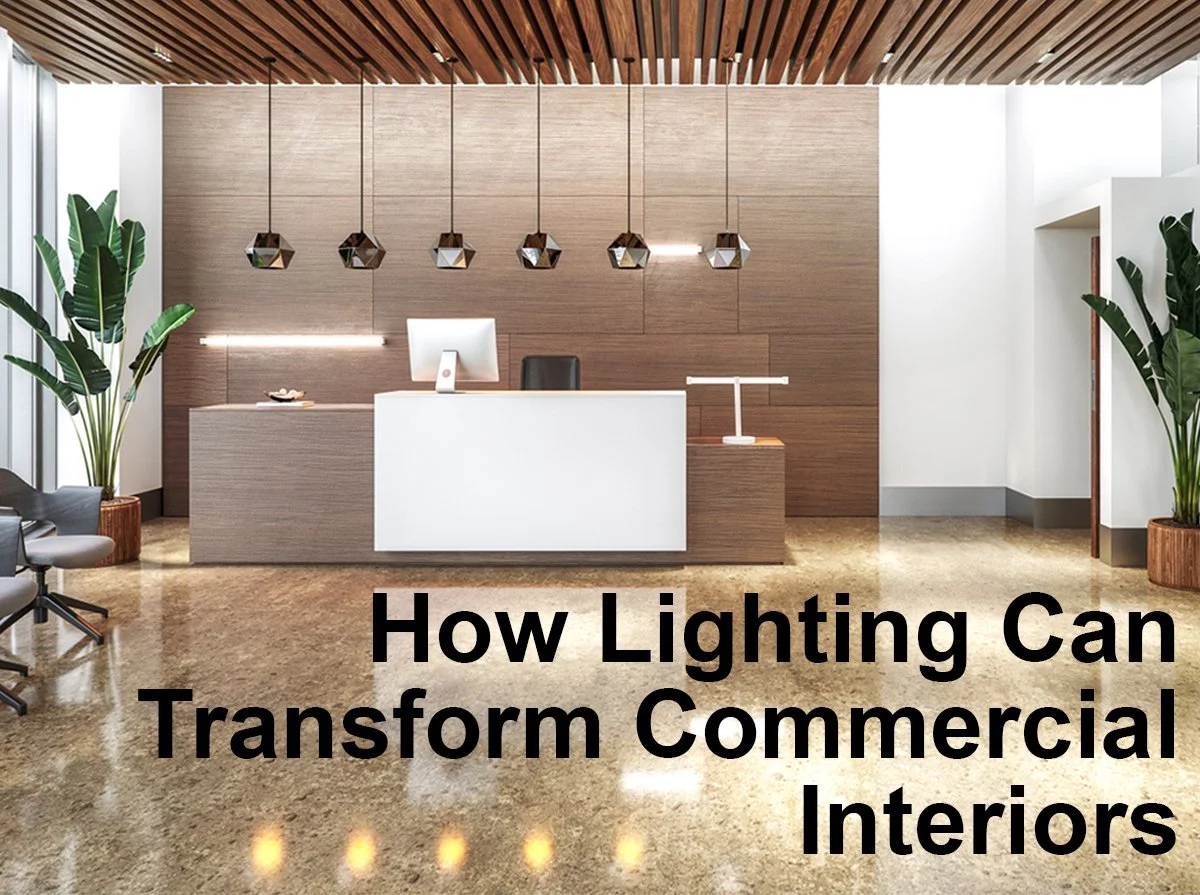Hotel Lobby Lighting Ideas To Impress Guests from the Moment They Arrive
A hotel must strike a rare balance—welcoming guests with the comfort of home while inviting them into an escape far beyond it. The lobby serves as the initial introduction, creating the first impression for guests. Each design element is vital and helps create a carefully formulated atmosphere. Essential to this equation is the lighting design.
A Lobby Bathed in Warm Light Speaks Before a Single Word Is Said
Much like a handshake, the lobby greeting is silent but speaks volumes—it shapes a guest’s first impression instantly. It’s also a chance to express the brand’s personality, giving guests a sense of what the hotel stands for before they even reach the front desk.
There’s also a practical side to lobby lighting that must be considered. Under the Americans with Disabilities Act (ADA), hotels must provide equal access to all guests, including those who are blind or have low vision. This means the lighting design must go beyond aesthetics; visibility and functionality are essential.
To meet these requirements, hotels must skillfully blend ambience with visibility. This is often achieved through layered lighting; for example, using bright, focused task lighting at the check-in desk, or placing floor lamps near seating areas to complement a soft, ambient backdrop.
We’ll explore how layering different types of light (ambient, accent, task, and decorative) helps hotels meet both functional and atmospheric goals in the next section.
Layering Light in Hotel Lobbies
Part of creating a well-balanced and inviting hotel lobby design is having the right combination of lighting. Done well, it becomes much more than just illumination. There's a magic and art to it, but we can dispel the mystery. The space has to be developed to create a lasting impression.
Some Terms to Know:
Natural Light: Sun or moonlight coming through windows or skylights.
Artificial Light: Man-made light from bulbs or fixtures indoors.
Ambient Light: Soft, overall illumination of a space.
Accent Light: Focused light that highlights features like artwork or architecture.
Task Light: Directed light for specific tasks like reading or working.
Decorative Light: Lighting that adds style beyond basic function.
Let’s explore how these lighting elements come together to create a welcoming atmosphere.
Ambient Lighting:
In a hotel lobby, ambient lighting provides the soft, foundational light that makes guests feel immediately welcome. Think large, recessed ceiling lights or diffused pendant fixtures that gently brighten the entire space without harsh shadows. Ambient light is essential because of the inconsistency of natural light, which varies throughout the day; ambient lighting complements these variations.
Accent Lighting:
Accent lighting draws attention to the lobby’s best features, like a standout piece of artwork or a striking architectural detail. Cove lighting, where LED strips or tape lights are tucked into ceiling recesses or ledges and cast light upward or downward, creates a soft, indirect glow. Under-cabinet LEDs or directional track heads also create subtle contrasts that enhance visual depth and reinforce the hotel’s design story. Finishes like polished chrome not only reflect light beautifully but also add a contemporary touch that improves the overall atmosphere.
Task Lighting:
At check-in counters and concierge desks, task lighting is essential. Adjustable pendant lights or focused downlights help staff complete paperwork and assist guests without causing glare. In seating nooks or lounge areas, task lamps provide cozy, well-lit spots for reading or working on a laptop.
Decorative Lighting:
Decorative lighting showcases the hotel's unique personality. These decorative lighting fixtures help define the atmosphere, reinforce brand identity, and create a memorable visual impression that goes beyond function.
Statement Fixtures that Define a Space
Consider a statement piece, an instantly noticeable fixture, to engage guests as they enter the room. A large crystal chandelier that catches and reflects the light speaks to classic elegance, while an oversized pendant with sharp, angular edges creates a bold, modern minimalism that’s clean and architectural. This is an opportunity to further define your brand through specific design elements and stylistic choices.
Crystal and Modern Hotel Lobby Chandeliers
Crystal chandeliers inspire elegance, luxury, and beauty. The light plays among the crystals, catching, casting, and reflecting the light. It's a spectacle, not just a fixture. For a more modern feel, contemporary chandeliers offer clean lines and bold forms that add sophistication without feeling traditional.
Oversized Pendants and Art-Inspired Fixtures
A statement piece commands attention, instantly setting the tone. Options like oversized pendants or art-inspired fixtures not only light the space, but also act as visual storytelling. Once again, it all depends on what you want your brand to communicate and how you want guests to feel the moment they walk through the door.
Linear Suspension Lighting for Modern Brands
Another possibility to explore is linear suspension lighting. These fixtures may be more suitable for elongated or open-concept spaces, where they can guide the eye and support natural movement through the room. This fixture reflects a more contemporary sense of style.
Choosing the Right Fixtures for Your Brand
When selecting lighting fixtures and shaping a brand’s lighting style, consider several key factors.
Materials
Whether metal, fabric, crystal, or glass, the fixture material develops the atmosphere for the entire space. Choose finishes that reflect your brand’s stylistic profile. Several factors to consider when choosing a material:1. Brand Identity:
What tone does the material evoke, and does it match the brand's identity? For example, polished metals and glass suit a modern or upscale setting, while wood or fabric may feel more rustic or cozy.2. Durability and Maintenance:
Will the material hold up in a high-traffic environment like a hotel lobby? Materials like metal and acrylic are typically more durable and easier to clean than delicate fabrics or untreated wood.3. Light Interaction:
How does the material affect light diffusion or reflection? Crystal and glass can scatter light beautifully and create sparkle, while matte materials like fabric diffuse light for a softer glow.4. Cost and Availability:
Some materials may be more expensive or have longer lead times. Budget, timeline, and project scale may influence material selection.
Scale of the Fixture
A fixture’s size should suit the lobby’s ceiling height and overall volume. An undersized fixture can get lost, while one that’s too large may overwhelm the space. Scale thoughtfully to create balance and impact.
LED Advantages for Lobby Spaces
LED lighting is highly energy efficient, using a fraction of the power compared to traditional lighting options. This efficiency translates into substantial savings on electricity bills, making it a cost-effective choice for busy lobby areas that require lighting for extended periods.
LEDs reduce the frequency of bulb replacements, resulting in less disruption and lower maintenance costs for lobby spaces, where reliable and consistent lighting is essential for creating a welcoming atmosphere and lasting impression. This helps minimize maintenance headaches for fixtures that are tough to access.
Color Temperature Chart
LEDs offer flexible lighting options, including tunable white, allowing you to adjust the color temperature. The color temperature should be adjusted based on the type of light and the desired mood. 4000 Kelvin is considered cool white and works well for task lighting, while 2700 Kelvin gives off a warm glow that helps create a cozy, inviting atmosphere. Different events call for different moods, and in a busy lobby, it’s helpful to shift between calm and celebratory lighting.
Smart lighting refers to lighting systems that can be controlled remotely or automatically through apps, sensors, or remote controls. These lights can adjust brightness, change color temperature, and turn on or off according to a set schedule. In hotel lobbies, smart lighting makes it easy to shift the mood throughout the day and can be programmed to create custom scenes for special events or activities. It also improves energy efficiency by dimming or switching off when areas are unoccupied.
LED systems integrate well with smart controls and programmable lighting scenes. Facility managers can automate lighting schedules, adjust brightness remotely, and create customized scenes that suit different times of day or occasions in the lobby space.
Browse Commercial Lobby Lighting Solutions
Lighting is more than just illumination: it’s one of the first ways your hotel communicates with guests. The right lighting design welcomes, guides, and inspires, all while supporting your brand identity and operational needs.
Whether you’re outfitting a boutique lobby with statement fixtures or creating consistency across a nationwide chain, 1000Bulbs.com offers a curated selection of pendants, chandeliers, and ambient lighting solutions. For help finding the right fixtures for your hotel lobby lighting, call 1-800-624-4488 to speak with one of our lighting experts.
Hotel Lobby Lighting FAQs
What’s the best lighting temperature for a hotel lobby?
A color temperature between 2700K and 3000K is often ideal for hotel lobbies. This warm white range creates a welcoming and relaxed atmosphere, perfect for hospitality environments. However, areas that require more focus—like the check-in desk—may benefit from cooler temperatures around 3500K–4000K to support visibility and alertness.
Are LED chandeliers bright enough for commercial lobbies?
Yes—LED chandeliers designed for commercial use can absolutely provide sufficient brightness. Many offer high lumen outputs and are dimmable, allowing you to tailor the light levels throughout the day. Plus, LEDs are energy-efficient and long-lasting, making them an ideal choice for large spaces like hotel lobbies.
Can lobby lighting be integrated with smart building systems?
Definitely. Most modern LED systems are compatible with smart controls, allowing for automated scheduling, dimming, color tuning, and energy monitoring. This kind of integration enhances efficiency and enables hotels to adapt the ambience based on time of day, occupancy, or events.
How do I balance decorative lighting with functionality in a lobby?
The key is layering your lighting. Use ambient light as a base, task lighting in work areas, and decorative fixtures to define style and focal points. Decorative lighting should contribute to the mood while still providing usable light. It helps to choose statement pieces that offer both visual impact and practical illumination.
Sources:
ADA.gov - ADA Guide for Places of Lodging: Serving Guests Who Are Blind or Who Have Low Vision | ADA.gov
U.S. Dept. of Energy - LED Lighting | Department of Energy



